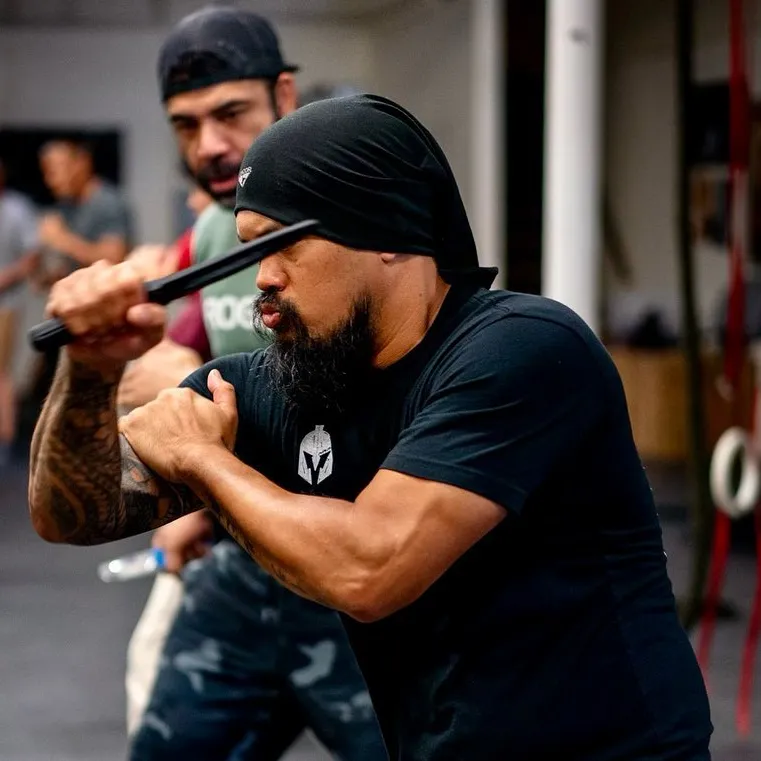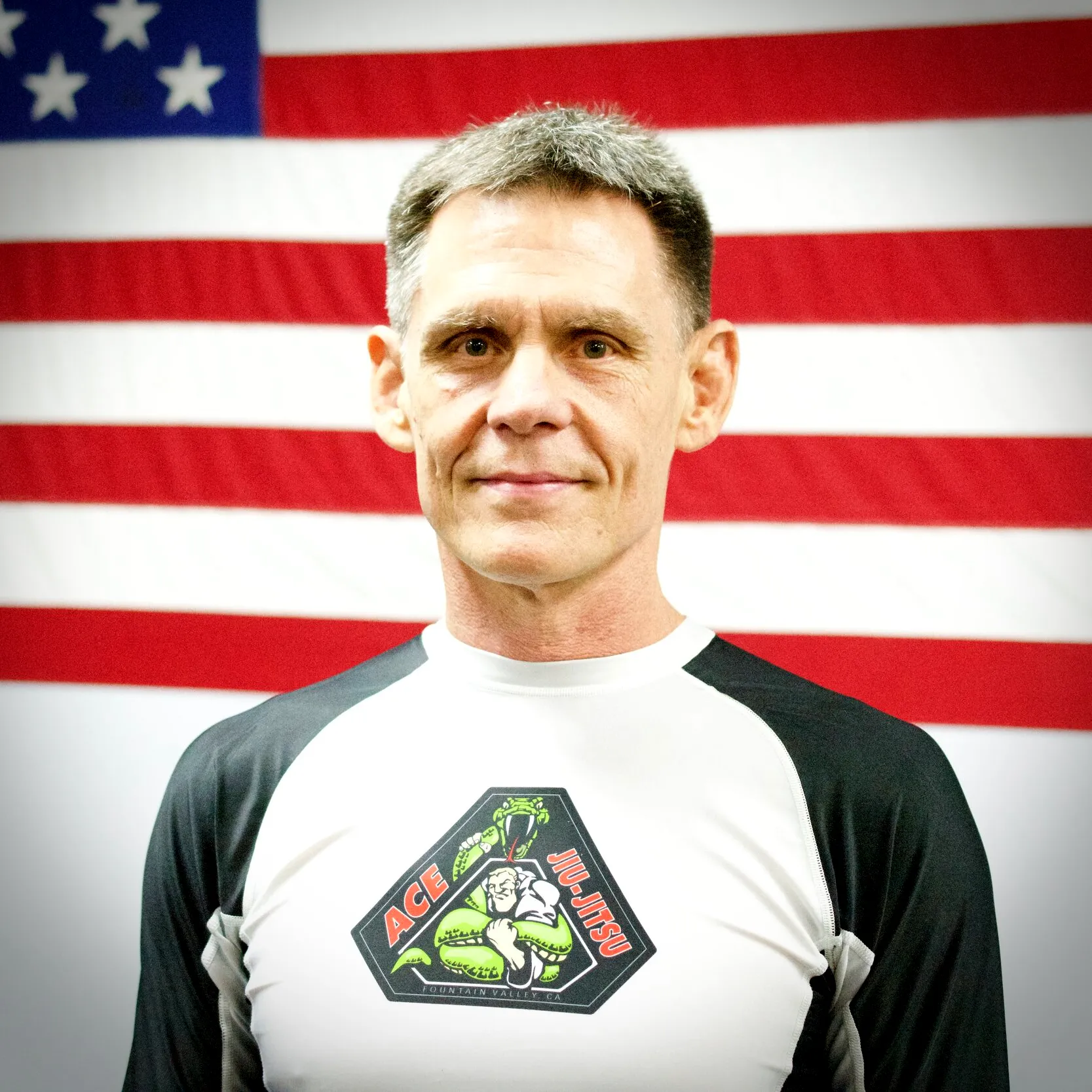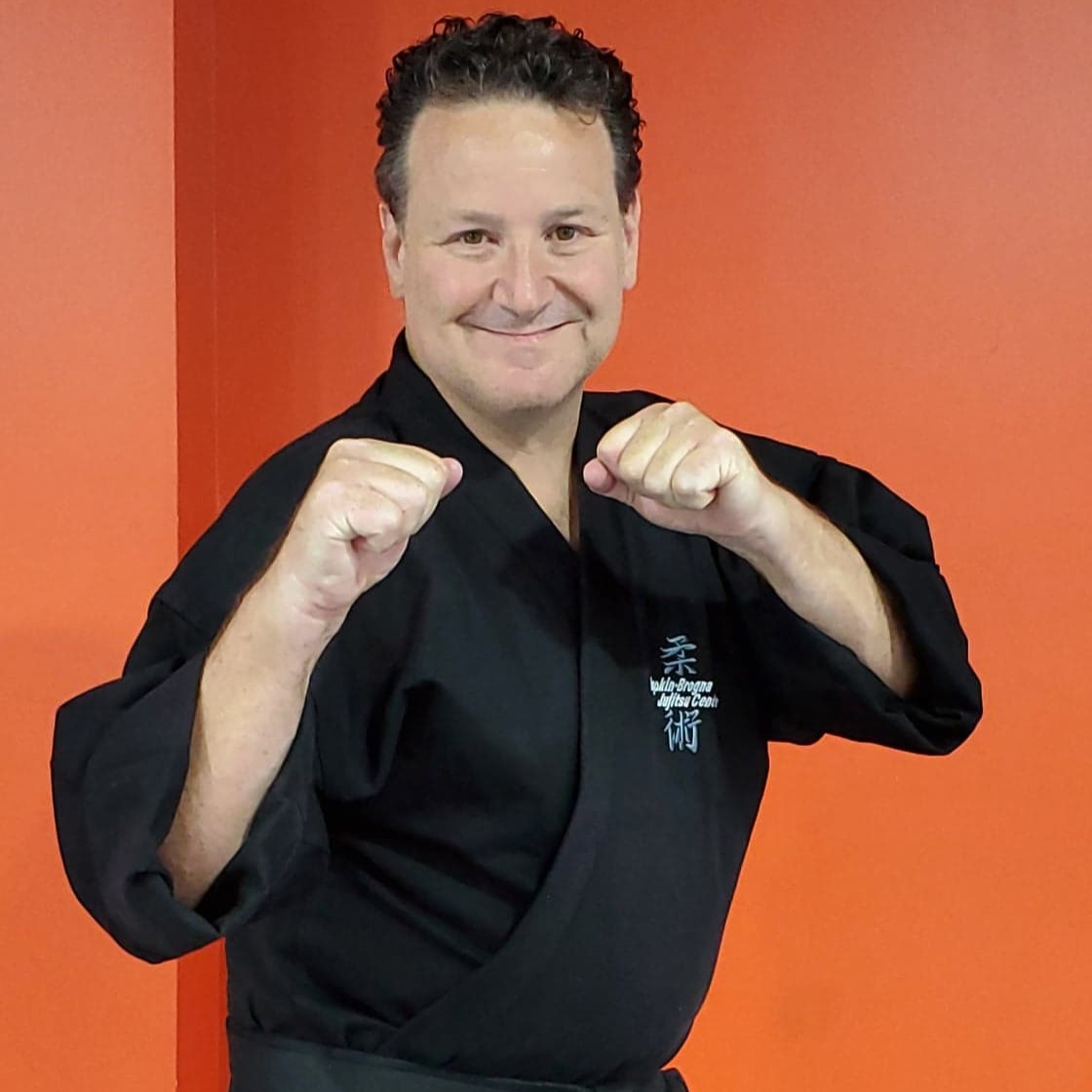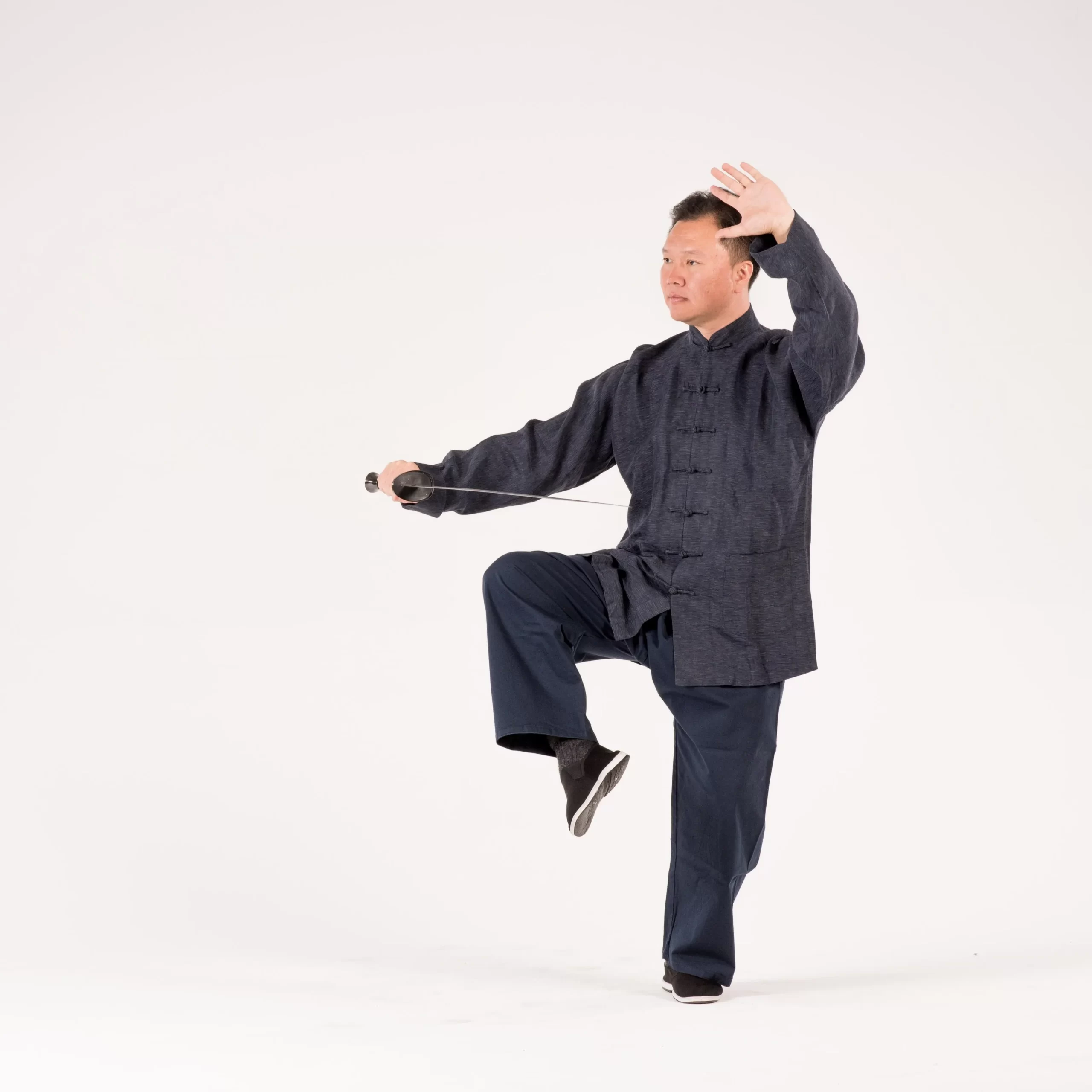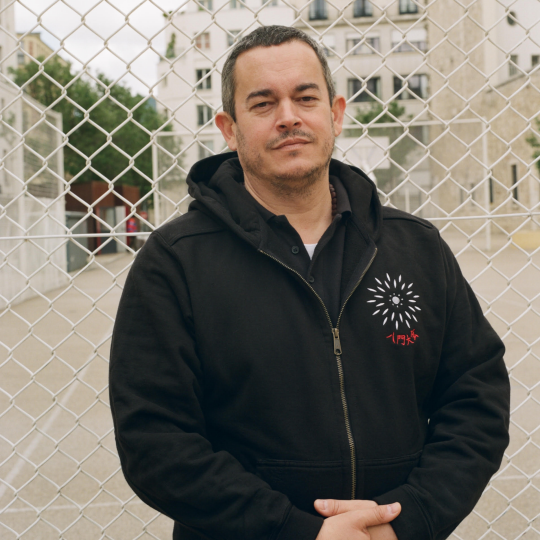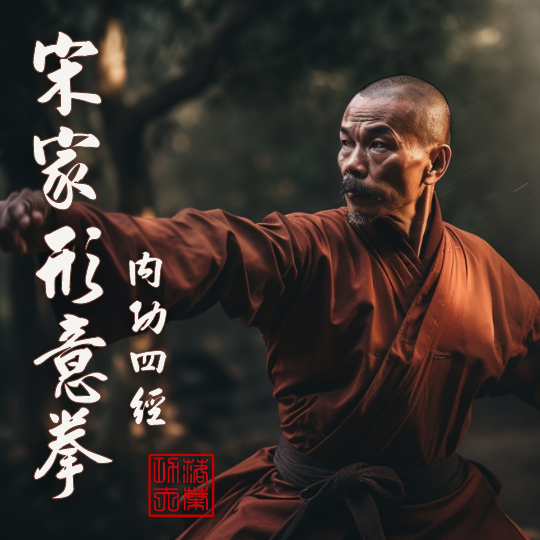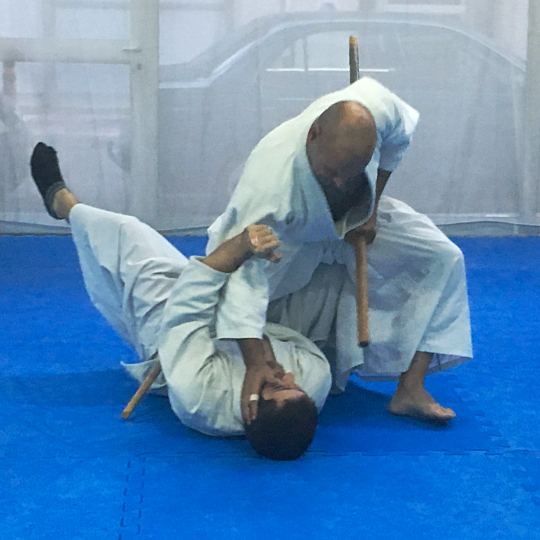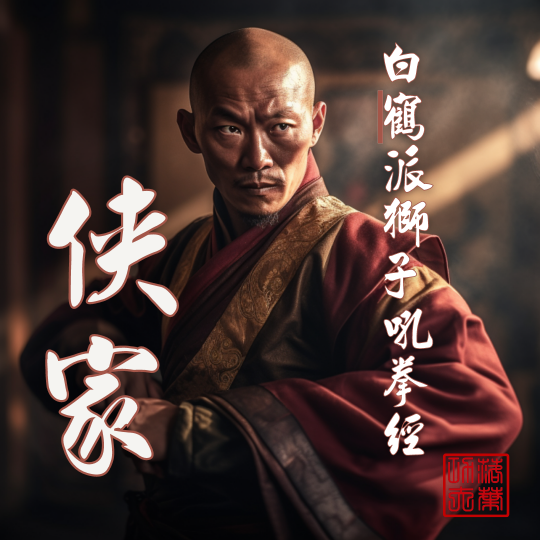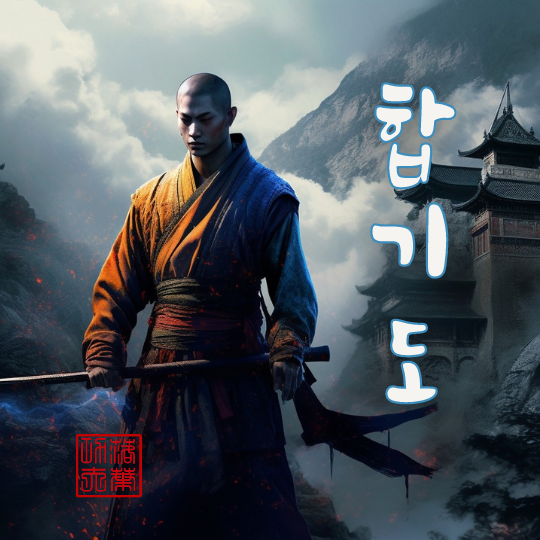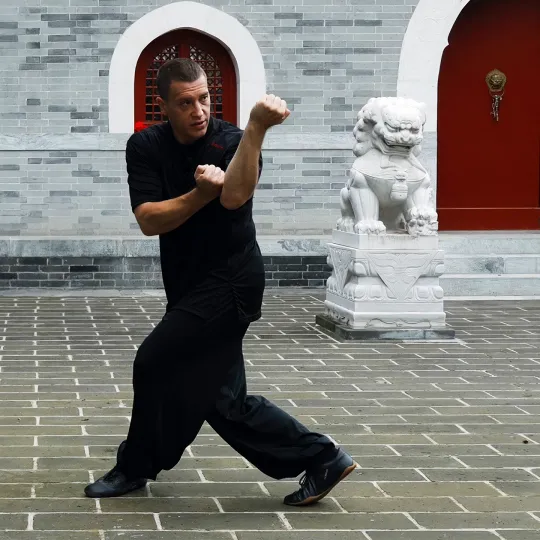
Introduction
I sat down with Byron Jacobs, author of “Dragon Body, Tiger Spirit” and a budding master of Xingyiquan (形意拳), a traditional Chinese martial art. Xingyiquan, often translated as “Form and Intent Boxing,” is a potent Chinese martial art characterized by its linear movements, explosive power, and harmonious blend of mind and body. Rooted in ancient Chinese philosophy and warfare strategies, it emphasizes the unity of internal energy (Qi 气) and external techniques, offering practitioners a deep, holistic approach to self-defense and personal development.
From his first judo lessons at the age of six to the bustling streets of Beijing, Byron’s journey is a story of passion, tradition, and evolution.
He spoke of brick-floored training grounds, the chill of cold water on tired muscles, and the delicate balance between athleticism and the profound cultural depths of traditional Chinese martial arts.
The tension between the age-old practices and the modern competitive sporting world was evident in his voice, yet his respect for tradition never wavered.

Our conversation wove through the political landscapes, touching on the resilience of martial artists during China’s Cultural Revolution. As he discussed his book, it became clear that it was more than just a publication; it was a bridge connecting the ancient wisdom of the Old Masters to contemporary enthusiasts.
By the end, I realized Byron Jacobs is more than a martial artist. He’s a historian, a storyteller, and a beacon for those seeking to understand the heart of Chinese martial arts and the people behind them.
Byron Jacobs’ Martial Arts Journey
“Martial arts, in general, has been something that I was kind of crazy about since I was a kid,” he began, crediting Bruce Lee and Chuck Norris movies as early inspirations. With a lineage of karate black belts in his family, the martial arts bug bit him early. But it was Bruce Lee‘s iconic moves that he yearned to emulate. Starting with judo at six, he remarked, “I think Judo is a good base for young kids, especially at that age when they’re not so conscious in terms of using their logical brain, but they’re very conscious with their physical bodies.”
Byron’s journey took a turn towards Chinese martial arts in his teens, where he was introduced to Wushu and a little-known, eclectic family system. His passion for Chinese culture was evident as he shared his experience attending a Chinese High School in his native land of South Africa. The allure of Jet Li’s “Once Upon a Time in China” further fueled his fascination, leading him to competitive Wushu.
Byron was pivotal in establishing the national representative Federation for Chinese martial arts in South Africa. After retiring as a competitor, his understanding and expertise led him to roles as an international certified judge and a technical representative.
Di Guoyong
However, having always had one foot in practical, combat-oriented martial arts, Byron began questioning the alignment of the sport of Wushu with traditional practices. “Why am I flipping three times and landing like this and destroying my knees?” he pondered. His quest for authenticity led him to Xingyiquan, a traditional Chinese martial art, and to Di Guoyong, a teacher he found to be “clear and concise.” Byron’s respect for his teacher was palpable as he spoke of their 15-year journey together.

The conversation took a critical turn as Byron touched upon the political landscape of sport Wushu. “I don’t want to sound too negative about sport Wushu and competitive Wushu. But there’s no other way to put it: the more you refine your knowledge in the traditional side of things, the more you see the problems [with sport Wushu], right, and in hindsight, I had the deluded idea that I could make an impact and try to change the direction of sport to pull it back to a more sane middle ground. And honestly, I did make some headway, but the political side of things just… you can’t deal with it,” he lamented.
Shanxi Ren Clan Seven Star Mantis
Diving deeper into Byron’s martial journey, I probed about his foundational training. “Well, at that point, when I was staying in the school, he taught two main systems,” Byron began, shedding light on a lesser-known Mantis system. “It’s called Shanxi Mantis as opposed to Shangdong mantis,” he clarified. This unique system, a blend of soft mantis with Xingyi concepts and a touch of Tai Chi, intrigued me. “Shanxi Ren Clan Seven Star Mantis,” he named it, emphasizing its distinctiveness from the commonly known Seven-Star system.
But it wasn’t just the art that captivated me; it was Byron’s dedication. “I used to train on brick floors,” he recalled, painting a vivid picture of his rigorous training regime. The rawness of his experience was palpable as he described the lack of equipment and the toll it took on his body. “We had no equipment, and I used to do some of those crazy things that you see you have to do for Wushu, but I was young and stupid. So I destroyed my body thinking that I could just… I mean, you can’t do that stuff on equipment without destroying your body. So you can imagine what I did to myself over those years on brick floors.”
His spartan living conditions mirrored his training’s intensity. “I was sleeping in the storeroom,” he shared, drawing parallels to scenes from a Shaolin Temple movie. The absence of luxuries like hot water didn’t deter him. “I used to wash myself every night out of a big bucket with cold water,” he added, emphasizing the character-building nature of his journey.
“A little ‘Chiku (吃苦)?’,” I remarked, using the Chinese term that translates to ‘eating bitterness’ or enduring hardship, a concept deeply ingrained in kung fu training. I nodded in admiration.
“Exactly,” Byron affirmed.
Love of The Game: Byron’s Martial Arts Odyssey
As our conversation flowed, I delved into Byron’s motivations for heading to the mainland. “I had wanted to pursue a little bit more of the professional side of Chinese Wushu,” Byron shared, revealing his aspirations to train in the very heart of the discipline. He spoke of his annual trips to Shi Cha Hai (什刹海体育学校) in Beijing, where the legendary Jet Li once trained, and his endeavors to join one of the professional teams.
Yet, as with many journeys, Byron’s path took unexpected turns. “After they changed the rules… that’s when I was like, yeah, no, no, thanks. This is pointless now,” he remarked, highlighting the evolving landscape of sport Wushu. His initial immersion in the “old school” Wushu, which had a more traditional essence, contrasted sharply with the newer, more commercialized version and its emphasis on set difficulties for different elements, similar to gymnastics.
Curious, I probed further, “Did you have any long-term plan… or did you do it just purely for the love of the sport?” Byron’s response was candid, “I never had a plan… I just wanted to practice; I just want to do it.”

He expressed his bemusement to those who entered martial arts with the primary goal of teaching. “Martial arts should live inside you and develop inside you first before you can give it to somebody else,” he opined. Nodding in agreement, I reflected on the reality many face in the West. “Even professional fighters (usually) die broke,” I pointed out, emphasizing the importance of pursuing martial arts for passion rather than profit.
Sport Wushu Vs Traditional Kung Fu
Byron’s journey through martial arts is one of passion, discipline, and self-discovery. As we delved deeper into his experiences, the contrast between movie-inspired dreams and the gritty reality of martial arts became evident. “You took your initial inspiration from Bruce Lee and Chuck Norris… then you very quickly got into some real stuff,” I remarked, highlighting the transition from cinematic allure to genuine combat.
Byron’s response was enlightening. “I’d always been more practically minded,” he began, emphasizing his focus on the combat essence of martial arts. Even while practicing the sport of Wushu, Byron’s approach was rooted in functionality. “Where should my hand be for defense?” he’d often ponder, ensuring every move had a practical purpose.
However, Byron also highlighted the stark divide between traditional martial arts and the official sport Wushu movement. “Traditional martial arts after the Cultural Revolution… became a thing that is completely separate to the official sports movement,” he explained. This disconnect is still evident today, with traditional practitioners often expressing disdain for sport Wushu, viewing it as a cartoonish, circus-inspired pantomime of their cherished arts.
Wushu vs Sanda
Amid our conversation, Byron recounted an episode from his time at the academy in South Africa. As he practiced, some newer Sanda trainees, unaware of his background in Sanda, scoffed at his Wushu techniques, doubting their combat effectiveness. Rising to the challenge, Byron invited them to spar, proving his point a bit too emphatically, leaving one with a week-long absence and another nursing a three-day headache. Despite his overwhelming victory that day, deep down, Byron admitted his aggressive response was a manifestation of his own insecurities about Wushu. He had always sensed the limitations of Wushu in real combat, and this incident was a reaction to that truth he had been trying to suppress.
Byron, with a thoughtful expression, acknowledged the undeniable benefits of Wushu’s athletic nature, emphasizing the physical development it offers in terms of flexibility, speed, and strength. “There’s undeniable value in the athleticism Wushu brings,” he began, “but it shouldn’t be the entirety of one’s training.” He stressed the importance of a robust technical foundation regarding combat effectiveness.
I nodded in agreement, recalling a recent conversation with Tim Cartmell. “Tim mentioned something similar,” I shared. “Regardless of the martial art style, when it comes down to actual combat, it’s fundamentally an athletic event. That athleticism, the explosiveness, the flexibility, it’s all crucial. But,” I paused for emphasis, “as I always say, strength is a supplement, not a substitute for skill.”
The technical base remains paramount.
The Cultural Revolution & Kung Fu: A Complex Legacy
We delved into a topic that has long been a point of contention among martial arts enthusiasts: the impact of the Communist and Cultural Revolutions on Chinese martial arts on the mainland.
It’s a subject that often evokes strong emotions and polarized opinions, with some arguing that these political upheavals decimated traditional martial arts. In contrast, others believe they had little to no effect.
Martial Arts in Revolutionary China
Byron shed light on the often misunderstood impact of these political upheavals on martial arts. “When somebody wants to say that the Cultural Revolution wiped out all Chinese martial arts in the mainland, that’s… a very simplistic and somewhat ignorant understanding,” he remarked. While the Cultural Revolution did bring about challenges, it didn’t erase the deep-rooted martial arts traditions. Many practitioners, especially in rural areas, continued their training in secret.
He shared a personal story about his teacher’s mentors, Zhao Zhong and Li Ziming, who had contrasting experiences during these times. Zhao Zhong faced persecution due to his political affiliations, while Li Ziming, thanks to his connections, was left relatively unscathed. “Li Ziming was practicing in the 60s… during the chaotic height of the Cultural Revolution. He never stopped training,” Byron revealed.
A Tale of Two Chinas
Such stories underscore the dichotomy of life in mainland China, simultaneously the “Wild West,” as Byron put it, within a dystopian, totalitarian state.
Byron also touched upon the post-revolutionary era, highlighting the gradual shift in public perception of martial arts. “In the sense of the public’s perception, it’s changed tremendously since then,” he noted. The government, recognizing the cultural value of martial arts, began to use it as a tool for Chinese “soft power,” attracting tourists dollars and a rising sense of nationalism. This shift, however, has its own set of implications, which only time will reveal.
One particularly evocative story Byron shared was the first public baishi ceremony after the Cultural Revolution.
“Baishi” (拜师) is a traditional Chinese ceremony where a student formally becomes a disciple of a martial arts master. In Chinese martial arts culture, the baishi ritual signifies a deep commitment between the teacher and student, establishing a bond akin to a parent-child relationship. This ceremony underscores the student’s dedication to the art and the master’s responsibility to impart knowledge. It’s a revered tradition, marking a significant milestone in a martial artist’s journey.
Despite the uncertainties and potential risks, Li Ziming and his disciples, including Byron’s teacher, proceeded with the ceremony. “They did it. It was publicly known. And nothing happened, thankfully,” Byron said. This event marked a turning point, signaling a return to some semblance of normalcy.
Drawing a parallel with basketball in America, Byron concluded, “Chinese martial arts in China is so widespread, and for the majority of people training at the parks, it’s just a hobby and a bit of fun exercise. But if you look deep enough, you’ll find people that are very skilled, very serious, carrying a tradition and knowledge on from before those times.”
Enter The Dragon Body, Tiger Spirit
Deciphering the Classics of Xingyiquan
I could have spent all day talking with Byron. His passion for the subject was palpable as he discussed his book, “Dragon Body, Tiger’s Spirit,” which seeks to illuminate the classics of Xingyiquan for a modern audience.
“The main part of the book is the classics,” Byron began, emphasizing the extensive nature of the Xingyiquan corpus. He mentioned various texts, such as the “Three Sections,” “Four Extremities,” and “Yuefei’s Nine Essentials Treatises,” which are universally recognized within the Xingyiquan community.
Byron’s approach to translating these classics is unique. “The essence of my translation is not to be a direct translation but to get the meaning and translate that so you understand what they’re trying to tell you,” he explained.
This method ensures that readers grasp the deeper insights of the texts rather than getting lost in direct and often confusing, more literal translations.
A particular point of interest was the Neigong Sijing (內功四经), a text from the Song family. “The Neigong Sijing is in the book, although… it only came into the public purview about 100 years ago,” Byron shared. This text, rich in Chinese medical and philosophical theory, is not exclusively tied to Xingyiquan. Its origins remain shrouded in mystery, and its relevance to martial practice is debated.
The Power of Notetaking
In the midst of our conversation, I posed a question to Byron, seeking to understand the driving force behind his book. “What’s your purpose for writing the book? What do you hope to accomplish with it?” I asked, genuinely curious.
Byron’s response was a journey into the heart of traditional martial arts teaching. “The book initially wasn’t started as me trying to write a book,” he began, explaining that it was a culmination of his deep dive into ancient martial texts. He painted a vivid picture of his teacher, a figure from an older generation who seamlessly blended physical instruction with classical theory. “While teaching you, they recite the quanpu by heart.”
“Quanpu” (拳谱) refers to the martial arts manuals or classics in Chinese martial arts. These written texts document the techniques, principles, philosophies, and histories of various martial arts styles. Quanpu play a significant role in the preservation and transmission of martial arts knowledge in China.
In traditional Chinese martial arts, oral transmission was the primary method of passing down knowledge from one generation to the next. However, as martial arts evolved and became more complex, there was a need to document this knowledge in a more structured and permanent form. This led to the creation of quanpu.
These manuals often include detailed illustrations of techniques, stances, and forms, accompanied by poetic verses or prose that describe the movements and their applications. The language used in quanpu is often symbolic and metaphorical, requiring interpretation and guidance from a knowledgeable teacher to fully understand and apply.
Your Pen Remembers
Bryon recalled his early days with his teacher, a meticulous learner who emphasized the importance of notetaking. “Where’s your pen and your notebook?” his teacher had asked during their first session. Byron chuckled, “I thought we were training.” But his teacher was adamant, “You won’t remember, but your pen remembers. So write that down.” This practice became a cornerstone of Byron’s learning process, resulting in piles of notebooks filled with wisdom.
Byron’s narrative took a nostalgic turn as he spoke of his teacher’s handwritten copies of the classics, a testament to a time when resources were scarce. “His teacher was illiterate,” Byron revealed, highlighting the challenges faced by the older generation. The classics, often rhyming and rhythmic in Chinese, were designed for oral transmission, catering to an illiterate audience.
I nodded in understanding, “Oral histories first.” This oral tradition, rooted in the rhythms and rhymes of the texts, was crucial for memorization, especially when many were illiterate. Byron, following his teacher’s footsteps, meticulously documented his learnings, gradually building a wealth of knowledge over the years.
The decision to transform these notes into a book was partly fueled by the need to clarify misunderstandings about classical texts in online forums and discussions. Locked into his neighborhood by the government, the plan-demic gave Byron the time to refine his notes further, leading to the eventual publication of his book.
Unlocking The Secrets of The Old Masters
Byron’s work is not just a translation; it’s an expansion and interpretation based on his evolving understanding of Xingyiquan. He acknowledges that while his book covers the generally accepted classics, it only encompasses some obscure texts. Through his translations, he noticed a pattern of repetition and expansion in the classics, indicating a generational layering of knowledge.
The quanpu, as Byron explains, were never intended for mass publication. They were personal notes, evolving instructions passed down through generations, expanding in theoretical content. This historical progression is evident in how concepts from earlier texts reappear and are elaborated in later ones.
Byron’s book, therefore, is more than a translation; it’s a testament to the living, breathing tradition of martial arts, where each generation contributes to the collective wisdom. His work underscores the importance of understanding the theoretical underpinnings of Xingyiquan, which he believes is essential for true mastery of the art.

The Relevance of Traditional Martial Arts in a Modern World
In a rapidly evolving world, the relevance of traditional martial arts in the 21st century might seem questionable or anachronistic to some. However, as I delved deeper into my conversation with Byron, it became evident that the essence of these arts goes beyond mere combat techniques.
Byron began by emphasizing the value of immersing oneself in a culture different from one’s own. “The study of a culture that’s not your own is beneficial to anybody,” he stated. This broadens horizons, offering a fresh perspective and a critical lens to view both the studied culture and one’s own. Through his book and the study of the classics, Byron highlighted how traditional Chinese martial arts offer a rich cultural experience, providing insights into Chinese philosophy and way of life.
But Can You Fight With It?
But what about the martial aspect? Byron was clear: “If you’re doing a martial art with no combat value, you’re not doing a martial art.” While acknowledging the undeniable martial essence, he also pointed out that traditional martial arts encompass more than just combat techniques. “We do Xingyiquan, we have big spears, we have swords… So you might ask yourself, why do that? Well, because it’s fun,” he remarked. The skills acquired from practicing with weapons, though not directly applicable in today’s world, can be transferred to other areas of life, including barehanded martial arts.

Byron also touched upon the importance of tradition. In a world where traditions are rapidly fading, he believes in their significance and the value they bring to individuals and societies. “Traditions are important. And continuing traditions are important,” he asserted. Handing down traditions not only enriches one’s life but also the lives of future generations.
Physical benefits aside, Byron emphasized the spiritual and psychological aspects of martial arts. Practices like Xingyiquan and Baguazhang focus on introspection and psychological development. “You’re directly working on psychological aspects, which I think are very important and very beneficial to your own development,” he concluded.
Bridging Cultures Through Martial Arts
Byron and I delved into the complexities of so-called “cultural appropriation,” especially in martial arts. “What the hell is cultural appropriation?” Byron exclaimed. He argued that culture is learned, not inherited. “If you’ve put in the time to learn that culture, then that culture is technically yours,” he said. This perspective resonated with me. Having dedicated two decades to Chinese martial arts, I’ve often grappled with my place in this ancient tradition as a “gweilo” (鬼佬, i.e., foreigner). Yet, as Byron pointed out, “If you’re learning Chinese martial arts, and it’s become part of your soul, that culture is yours, irrespective of the skin on your body.”
Byron’s words struck a chord. He emphasized that no one owns culture. Instead of gatekeeping, we should celebrate the exchange and sharing of traditions. This sentiment echoed my earlier thoughts on the depth and richness of Chinese martial arts. The intricate body of work offers profound insights into understanding oneself, both physically and mentally.
Our conversation then circled back to preserving tradition in an increasingly digital world. As automation and technology advance, there’s a widening gap between age-old traditions and contemporary life. “The more people in general we have that are trying to keep alive some of these traditions as much as they can, probably for the better,” I mused.
In essence, our dialogue underscored the universality of martial arts. Beyond physical techniques, they serve as a bridge between cultures, fostering understanding and appreciation. In a world that often feels fragmented, traditions like these can help weave the threads of connection.
Conclusion
Byron Jacobs’ journey through martial arts and his dedication to preserving the essence of traditional Chinese martial arts in the modern world is nothing short of inspiring.
His passion for Xingyiquan was palpable. “I find the overwhelming spirit and intent that you develop when you’re doing Xingyi to be something that is… Maybe it’s a bit addictive,” he mused. While he cherished his Bagua practice, Xingyi held a special place in his heart and daily routine.
Byron’s insights offered a window into the intricate world of martial arts, where choices aren’t just about techniques but resonate with personal journeys, philosophies, and life lessons. His deep understanding and respect for the culture, history, and philosophy behind the art is evident in his book, “Dragon Body, Tiger Spirit.” Through his work, he serves as a bridge connecting the wisdom of the Old Masters with contemporary enthusiasts, shedding light on the profound depths of Chinese martial arts. For those intrigued by Chinese martial arts, “Dragon Body, Tiger’s Spirit” promises a deep and enlightening journey.
Byron is not just a martial artist; he is a historian, a storyteller, and a beacon for those seeking to understand the heart of martial arts. His commitment to authenticity, his relentless pursuit of knowledge, and his unwavering love for the art make him a true embodiment of a living master.
Connect With Byron
For those looking to delve deeper into the martial arts wisdom of Byron Jacobs, you can connect with him through various platforms. Explore his insights and teachings on his YouTube Channel, Mushin Martial Culture. To learn more about his philosophy and access a broader spectrum of content, visit his website. Byron’s book “Dragon Body, Tiger Spirit” is available for purchase on Amazon.

Read More!
- Is Pepper Spray Effective For Self Defense?
- Why Hand-to-Hand Combat Still Matters in the Firearm Era
- What is a Kung Fu Master Called?
- Woman Fight’s Off Her Attacker At The Gym!
About the Author

Ashe Higgs, I Liq Chuan Master Instructor & L2 Nutrition Coach
Ashe is a highly skilled martial arts instructor and certified nutrition coach with over two decades of experience in the field. He holds a Master Instructor certification in I Liq Chuan under Sam FS Chin, making him one of only several individuals worldwide to hold the title. He has taught classes and workshops worldwide and is passionate about helping others achieve their fitness and wellness goals.
With a background in full-contact fighting and a Level 2 certification from Precision Nutrition in nutrition coaching, Ashe is a well-rounded expert in the fields of martial arts. In addition to his expertise, he has a wealth of experience in teaching and mentoring others. He has a natural ability to connect with his students and inspire them to reach their full potential.
Disclaimers & Conflicts of Interest
I am not a doctor or a lawyer, and the information provided should not be considered medical or legal advice advice.
The information provided is for educational and informational purposes only and should not be used as a substitute for professional legal or medical advice, diagnosis, or treatment. Consult your doctor or a qualified healthcare professional before making any changes to your diet, exercise routine, or lifestyle.
Please note that some of the links provided in this content may be affiliate links, meaning that I may receive a small commission if you purchase through them. However, please rest assured that any products or services recommended are based on my personal experience and belief in their value. I only recommend products or services that I have personally used and believe in.







